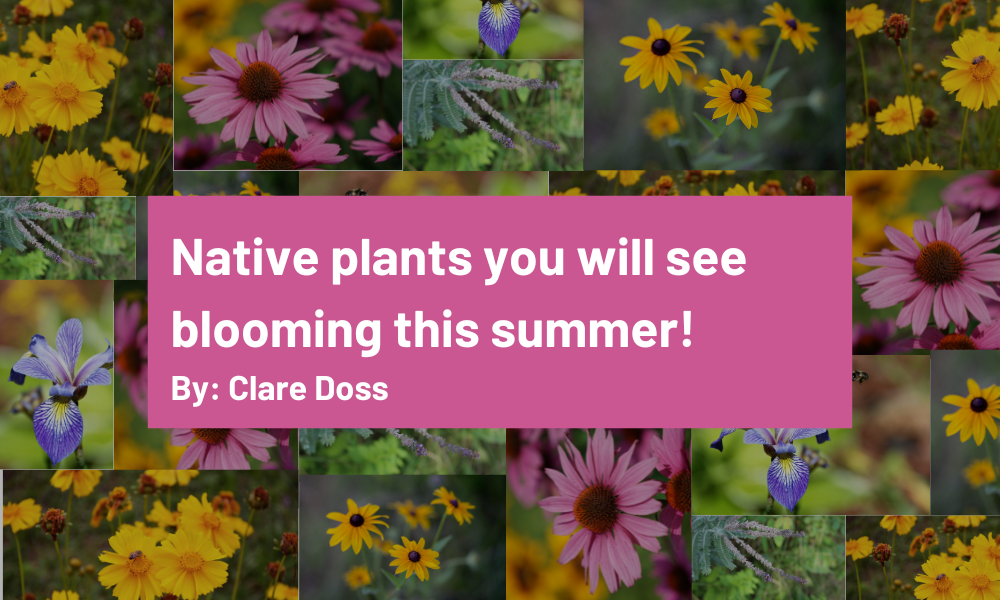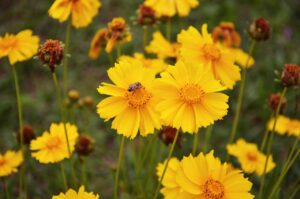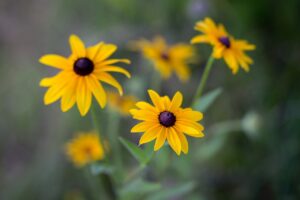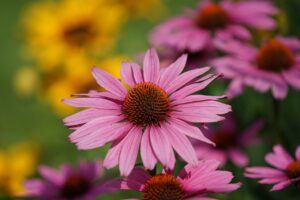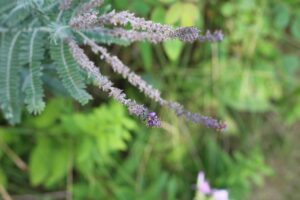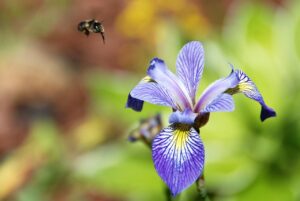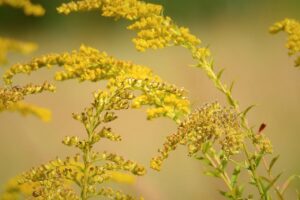By Clare Doss
“Natives” are plants local to the region in which they originated and flourished. Not only do they provide shelter and food to wildlife, but they also encourage native insects and other pollinators to visit the space. Implementing diverse floral spaces across a region can create a pollinator corridor. This can be thought of as a series of rest stops filled with pollen and nutrients for bees, butterflies, and birds to consume and collect. Pollinators help plants reproduce as they bring pollen from one flower to another.
Native plants also help hold in stormwater so that it doesn’t run off the land. They have massive root systems that create channels down which rainwater can flow (rather than directly into storm drains). Additionally, water will also be stored in the roots, which assists with providing nutrients to the plants. This is why these plants are used in rainscaping projects. What is rainscaping? This is a kind of landscaping practice that combines engineering and gardening. An example is a rain garden located in a saturated part of one’s backyard. Usually, these are basin-like flowerbeds into which rainwater flows after being caught on one’s roof or driveway. The plants in these beds help the water travel into the ground rather than flood a garden or cause soil erosion or flooding.
The plants listed below are common examples of species you would find in a Midwest rainscaping project accompanied by an image and description to help you identify them. If you are starting your own rainwater capture project, these are great plants for beginners and experts alike. When planning for your space, it is important to think about what environment will you be able to provide for your plants. Will the ground be wet most of the year? Or will it be quite dry? What are the light conditions? These are things to consider as picking the right plants will help you save money by promoting their flourishing.
Lance-leaved coreopsis also known as Lance-leaved tickseed… (Coreopsis lanceolata)
This plant often flowers in its second year. But produces a lot of seeds which will provide many future Coreopsis plants. These flowers love full sun exposure and a dry environment. It can grow in any Midwest soil type.
Black-eyed Susan (Rudbekia hirta)
This perennial only flowers in its second season after which the black-eyed Susans “self-sow” their own seeds, allowing for more to grow each year. Like Coreopsis, they like full sun, a dry environment, and any soil. Attracts bees and butterflies.
Purple coneflower (Echinacea purpurea)
This is a beginner-friendly perennial that attracts songbirds, bees, and butterflies. Purple coneflowers also like full sun and grow in most soil types. In the fall, the seedheads of this plant are very popular among goldfinches.
Leadplant (Amorpha canescens)
Like many other natives on this list, the leadplant likes full sun. While it also likes dry environments, it can do well with consistent moisture. This plant attracts pollinators too. It is a great addition to rain gardens in parking lots or on streets as the leadplant is salt tolerant.
Southern Blue Flag Iris (Iris virginica)
Irises thrive in wet environments. If you have a marshy backyard, this is the plant for you! Irises love full sun but will do well in partly shaded areas too. They attract butterflies and songbirds.
Zig Zag Goldenrod (Solidago flexicaulis)
This species of goldenrod loves shade and does well in an “average” moisture environment (neither wet nor super dry). It attracts songbirds, bees, and butterflies.
When gardening with native plants, you don’t have to install a rain garden or bioswale, or any other eco-conscious project. You can simply plant them for your own enjoyment. Not only will the colors and scents bring you joy, but the bugs and birds they encourage to stop by will too. I encourage you to plant natives if you have children and/or pets as all tend to be mesmerized by the visitors these plants host.
